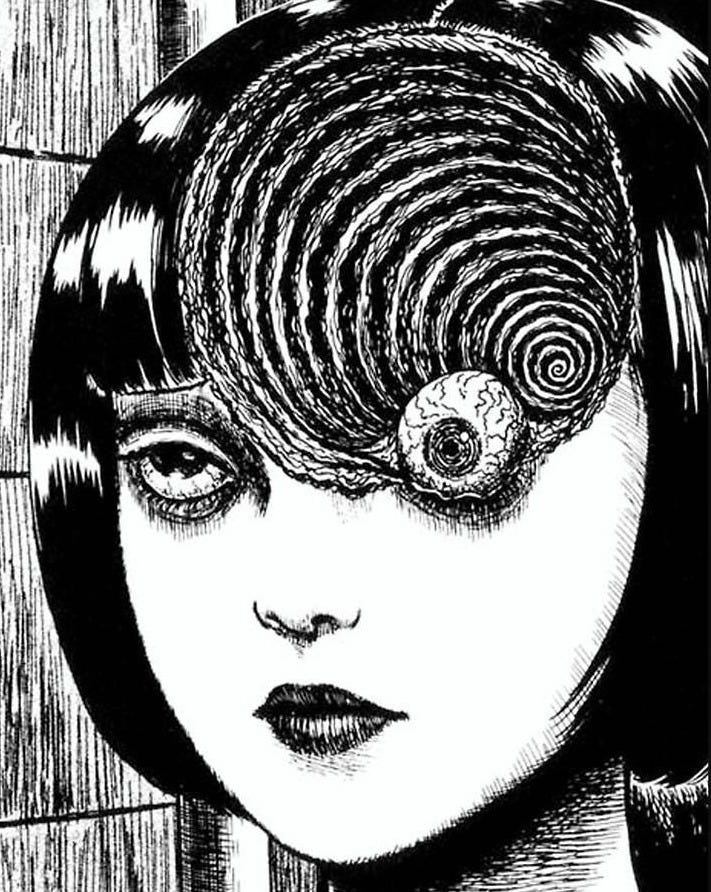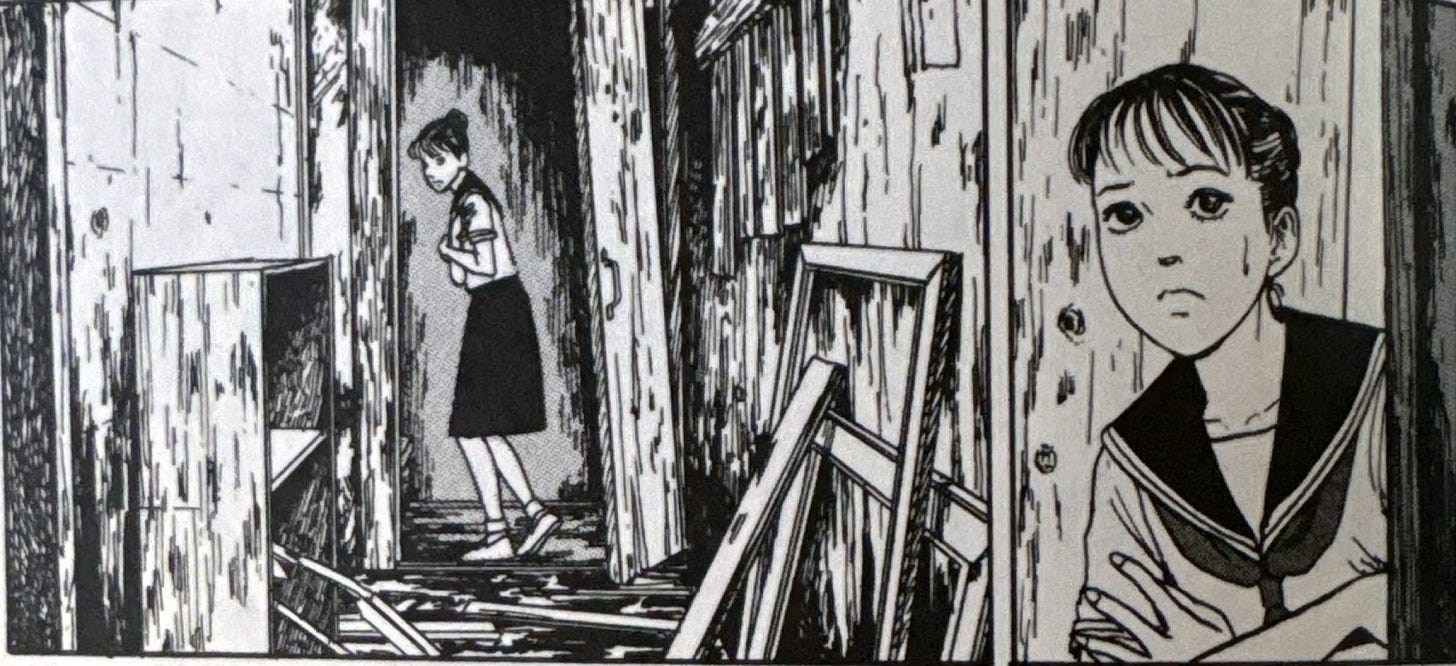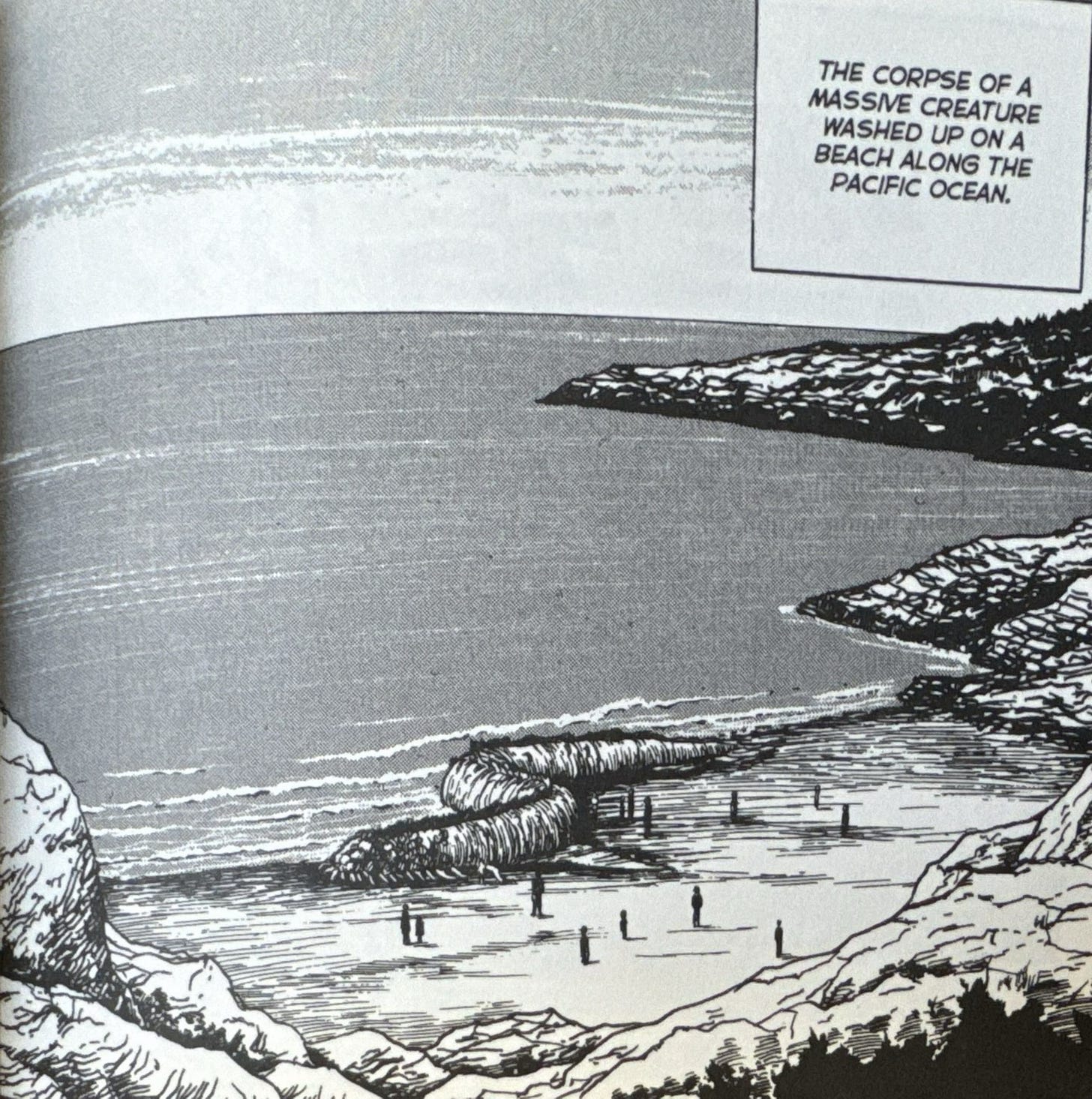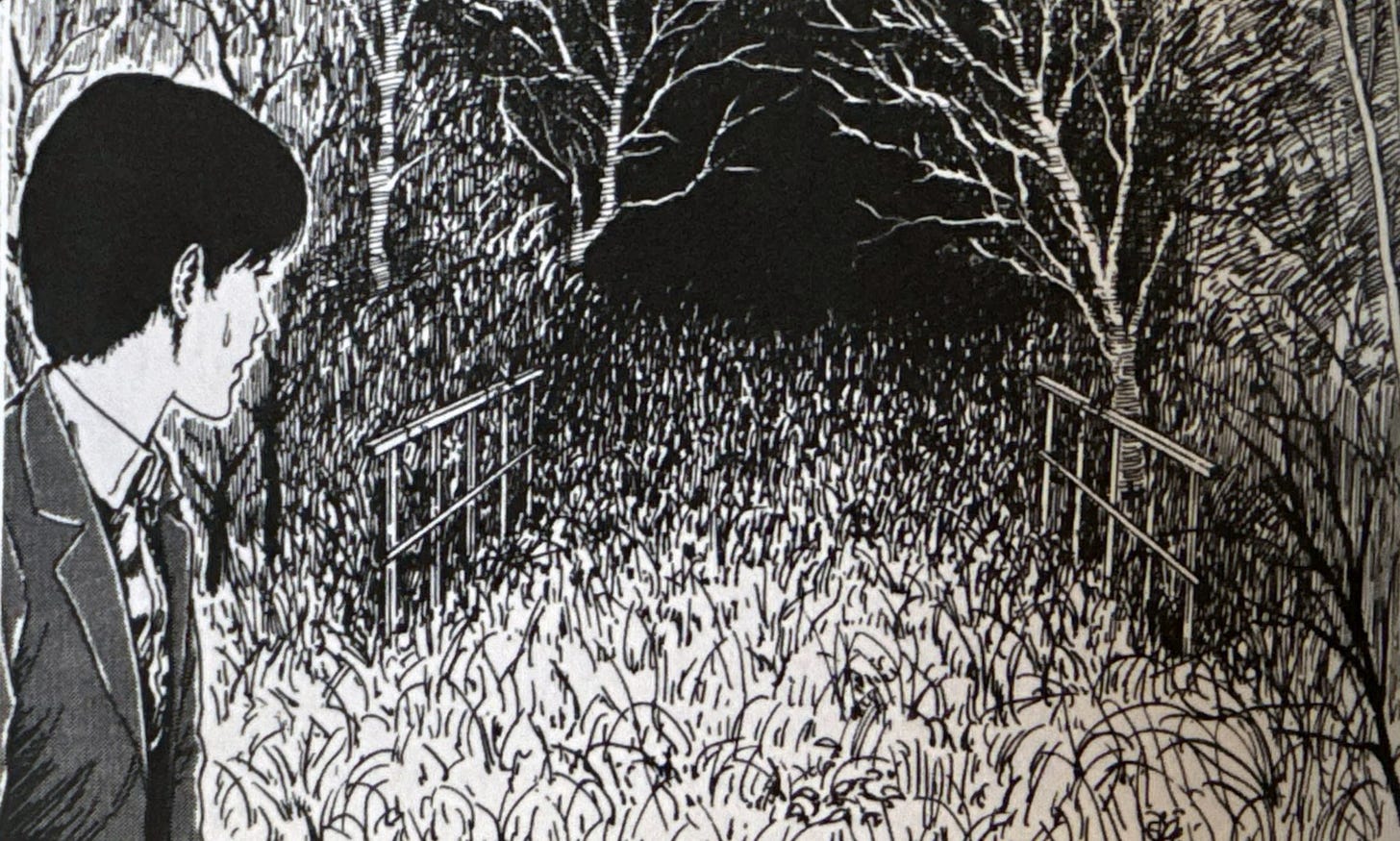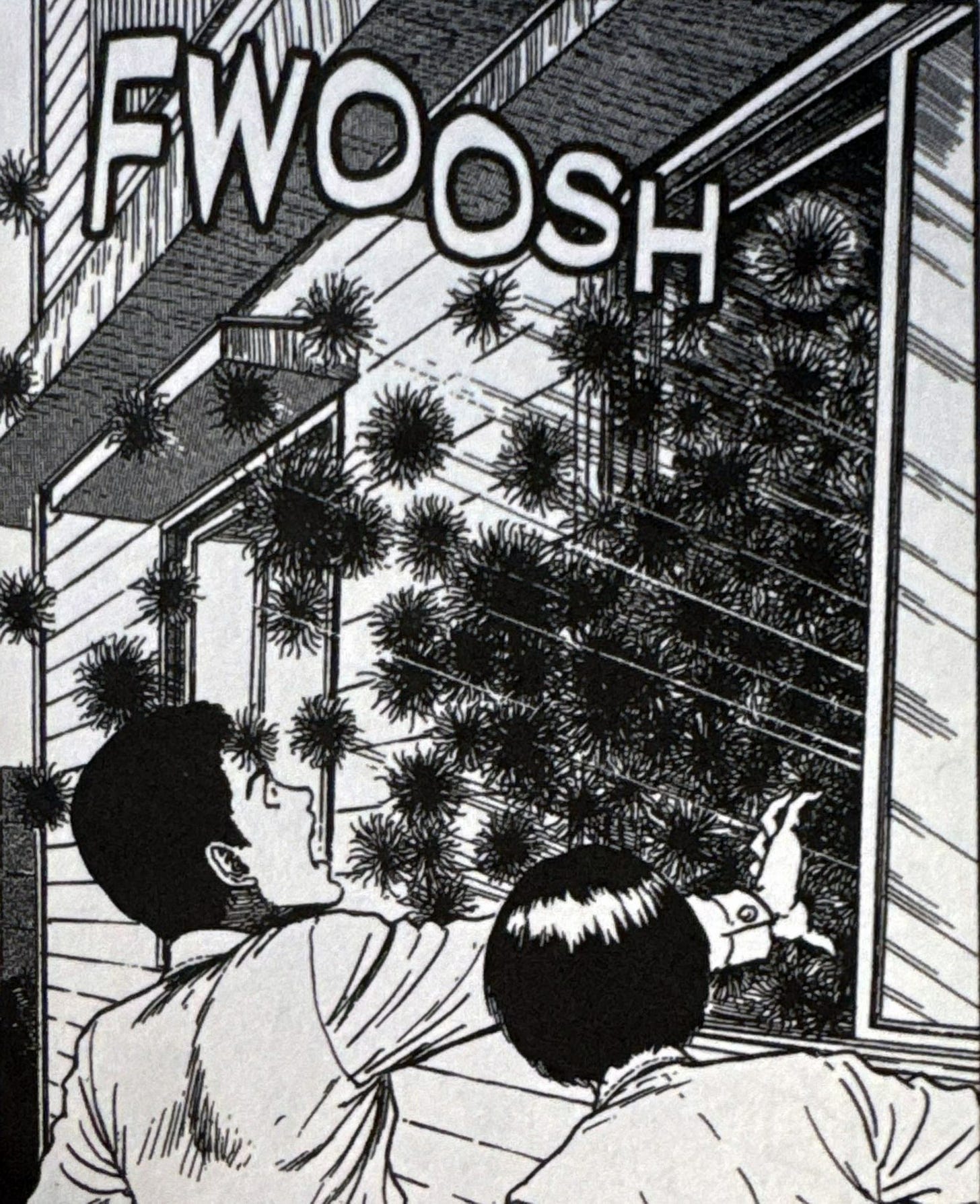Slugs, Statues, & Death by Pottery
A Review of "Tombs: Story Collection" by Junji Ito
STAR RATING: ☆☆☆☆
Spoiler-free review.
As a horror fanatic, I vaguely knew of Junji Ito from the iconic forehead-spiral image taken from his most popular work, Uzumaki. I finally decided to give his works a try a few years ago and fell in love with his horrific imagery and, at times, unusual ideas. I’m building a collection of his hardcovers and was gifted Tombs, a short-story collection featuring nine unique tales of horror.
Having read his other story collections like The Liminal Zone and Shiver, I assumed Tombs would be a bit of a mixed bag. I believe Junji Ito shines the brightest in his longer works and though I always enjoy reading his stories, some of his shorter fiction falls a little flat for me. This isn’t to say they aren’t good—any Junji Ito work is of higher quality than most horror media I’ve seen. But it’s obvious when a four or five-page story is built around the idea of a single panel meant to shock you before the story abruptly ends, leaving you wondering “Was that it?”
With that being said, I thoroughly enjoyed Tombs. Even the weakest stories had me cringing with disgust or shock, and they were all deeply unnerving in their own ways. Some even had me laughing. It’s a book Junji Ito fans and first-time readers alike will appreciate. I’ll give one warning to anyone newly interested in diving into Junji Ito—there’s a lot of body horror. I’d argue body horror is Ito’s main selling point. Graphic images of twisted limbs, decayed corpses, and lots of blood are to be expected, and Tombs was no exception.
I give it four stars; entertaining, chilling, and creative with a few stories holding it just beyond perfection.
Below are spoiler-free ratings and discussions of Tombs’ individual stories. (All images were scanned from my physical copy.)
Tombs - ☆☆☆☆☆
The title story features two siblings who visit their friend in a town with seemingly strange burial customs—when someone dies, a tomb is placed in the exact spot they died. They, of course, learn it’s much darker than that. In the midst of this, the siblings hide their own atrocious actions from the townsfolk. The story is one of the best in the collection and keeps readers on their toes with a sense of dread, like something horrible is about to happen and they can’t look away.
Clubhouse - ☆☆
Three high-school friends find an abandoned house and split up when they enter; one explores upstairs, the other downstairs. This one decision leads to a series of strange events that are more bizarre than scary, and the story isn’t long enough to explore any of the themes it introduces, making it the weakest one.
Slug Girl - ☆☆☆
A young girl visits her friend to discover something very gross has happened. It involves slugs. This story is so short I can’t say anything else without giving it away. It did its job of making me cringe and feel uneasy, but the last titular panel was so absurd it made me laugh instead of feeling scared. This is one of the aforementioned tales that seems to build up to a singular panel before the story ends abruptly.
The Window Next Door - ☆☆☆☆☆
After moving into a new house with his parents, a teenage boy starts to hear calls from an older woman whose window faces his—and she wants to enter his room very badly. This was a shorter story that hit every mark and I thought about it longer after I finished reading.
Washed Ashore - ☆☆☆☆
A dead Lovecraftian creature washes ashore, leaving everyone to wonder where it came from, what it is, and what horrors lurk in its stomach. This story is brief and not character-focused, so most of the imagery and panels are about the creature and what the masses are saying. It was unnerving and the twist made me set the book down and stare at my ceiling to process what I’d just read.
The Strange Tale of the Tunnel - ☆☆☆☆
A man returns to the tunnel in his hometown to confront his past and the horrors inside. This was the longest story and the first to have a wide cast with discernable personalities and humor. The horror itself wasn’t what got me, it was what the horror implied—something I can rarely find conveyed anywhere but stories by Junji Ito. Trigger warning for mentions of suicide.
Bronze Statue - ☆☆☆
This was the whackiest story in the collection. A group of mothers are invited to the deceased mayor’s wife’s home after mocking her statue in the park. The mayor’s wife is characterized from the very first panel, letting readers know right away there’s something very wrong with this woman. The story is longer than I think it needed to be and the villains’ banter made them more mockable than intimidating, but the body horror snapped me right back into feeling scared. I audibly gasped at one page.
Floaters - ☆☆☆☆
Little hairy balls start to pop up in a small town, repeating the inner thoughts of the townsfolk for all to hear. The concept had me skeptical at first—what’s scary about little hairballs?—but the more I read, the more I realized what Ito was trying to convey. Having all your inner desires and secrets told to all your neighbors is scary in itself, but the actions the townsfolk take next are even scarier.
The Bloody Story of Shirosuna - ☆☆☆☆
A doctor is assigned to a small, isolated town in the wilderness and notices there’s something very wrong with its residents. This story leaves you with lots of unanswered questions which could be annoying for some, but that feeling of wanting more is what I think makes the tale hit so hard. You don’t know, and that’s frightening. Lots of blood in this one and a brief depiction of self-harm.
Thanks for making it to the end! I’ll be reviewing more Junji Ito books as I continue my collection, so subscribe if you want to see more.




